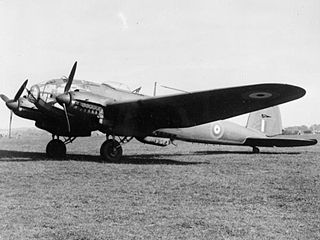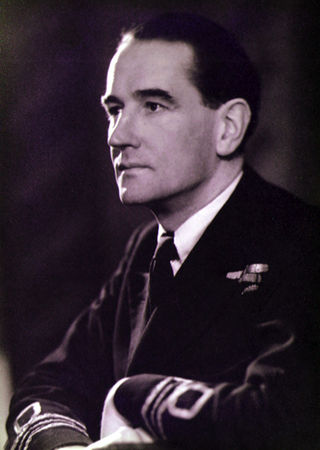
The Admiralty was a department of the Government of the United Kingdom responsible for the command of the Royal Navy until 1964, historically under its titular head, the Lord High Admiral – one of the Great Officers of State. For much of its history, from the early 18th century until its abolition, the role of the Lord High Admiral was almost invariably put "in commission" and exercised by the Lords Commissioner of the Admiralty, who sat on the governing Board of Admiralty, rather than by a single person. The Admiralty was replaced by the Admiralty Board in 1964, as part of the reforms that created the Ministry of Defence and its Navy Department.

The Second Sea Lord and Deputy Chief of Naval Staff is deputy to the First Sea Lord and the second highest-ranking officer to currently serve in the Royal Navy and is responsible for personnel and naval shore establishments. Originally titled Second Naval Lord in 1830, the post was restyled Second Sea Lord in 1904. They are based at Navy Command, Headquarters.

The post of Controller of the Navy was originally created in 1859 when the Surveyor of the Navy's title changed to Controller of the Navy. In 1869 the controller's office was abolished and its duties were assumed by that of the Third Naval Lord whose title then changed to Third Naval Lord and Controller of the Navy. In 1904 the title was changed again to Third Sea Lord and Controller of the Navy. In 1965 the office of the Third Sea Lord was abolished. The post-holder is responsible for procurement and matériel in the British Royal Navy.

Operation Ruthless was the name of a deception operation devised by Ian Fleming in the British Admiralty during World War II, in an attempt to gain access to German Naval Enigma codebooks.

No. 30 Commando, from 1943 to 1946 known as 30 Assault Unit, was a British Commando unit during the Second World War, originally formed to gather intelligence.

The Fourth Sea Lord and Chief of Naval Supplies originally known as the Fourth Naval Lord was formerly one of the Naval Lords and members of the Board of Admiralty which controlled the Royal Navy of the United Kingdom the post is currently known as Chief of Materiel (Fleet). As of 2017, it is also known as Chief of Fleet Support, Chief of Materiel (Ships) then as of 2020, Director General Ships.

The Fifth Sea Lord was formerly one of the Naval Lords and members of the Board of Admiralty that controlled the Royal Navy. The post's incumbent had responsibility for naval aviation.

The Commander-in-Chief, The Nore, was an operational commander of the Royal Navy. His subordinate units, establishments, and staff were sometimes informally known as the Nore Station or Nore Command. The Nore is a sandbank at the mouth of the Thames Estuary and River Medway. In due course the Commander-in-Chief became responsible for sub-commands at Chatham, London, Sheerness, Harwich and the Humber.

Admiral John Henry Godfrey CB was an officer of the Royal Navy and Royal Indian Navy, specialising in navigation. Ian Fleming is said to have based James Bond's boss, "M", on Godfrey.

Ralph William Burdick Izzard, OBE was an English journalist, author, adventurer and, during World War II, a British Naval Intelligence officer.

The Assistant Chief of the Naval Staff (A.C.N.S.) is a senior appointment in the Royal Navy usually a two-star rank and has a NATO ranking code of OF-7.

The Admiralty War Staff was the former senior naval staff operational planning organisation within the British Admiralty that existed from 1912 to 1917. It was instituted on 8 January 1912 by Winston Churchill in his capacity as First Lord of the Admiralty and was in effect a war council whose head reported directly to the First Sea Lord. After the First World War ended, the War Staff was replaced by the Admiralty Naval Staff department.

The Admiralty Naval Staff was the former senior command, operational planning, policy and strategy department within the British Admiralty. It was established in 1917 and existed until 1964 when the department of the Admiralty was abolished. It was replaced by the Ministry of Defence as part of the Ministry of Defence Navy Department.

The Operations Division was a former directorate of the Admiralty Naval Staff responsible for the creation and implementation of long-term policy in regards to the composition of all Royal Navy fleets, squadrons and commands and including operational planning and monitoring from 1912 to 1961.

The Naval Intelligence Department (NID) was the intelligence arm of the British Admiralty from 1887 until 1912 when most of its subsidiary divisions were absorbed during the creation of the Admiralty War Staff department that included a new Naval Intelligence Division that concentrated in that sphere solely. It dealt with intelligence matters concerning British naval plans, and with the collection of naval intelligence in regard to coastal defences, foreign powers, mobilisation, trade and war.

The Naval Mobilisation Department also known as the Mobilisation and Movements Department was a former department of the British Admiralty initially from 1909 to 1912 and then again from 1918 to 1932. It was mainly responsible for plans, mobilisation and manning during the pre-World War I and post war period.

The Mobilisation Division was the former Directorate of the British Admiralty Naval Staff responsible for mobilisation requirements, manning and war preparation planning from 1912–1918.

The Signal Division was a Directorate of the Admiralty Naval Staff responsible for policy, control and management of all naval communications from 1914 to 1964.

The Admiralty Navy War Council was a temporary war planning and naval strategy advising committee of the Admiralty established in October, 1909 under Admiral Fisher it existed until 1911 when it was later replaced by the Admiralty War Staff.

The Directorate Naval Tactical and Weapons Policy originally called the Tactical Section was a directorate of the British Admiralty, and later of the Naval Staff, Ministry of Defence,. Dating from 1920 it operated until 1939 before being abolished. It was revived in 1958 and existed until 1968. The naval staff directorate was administered by the Director, Directorate Naval Tactical and Weapons Policy.








